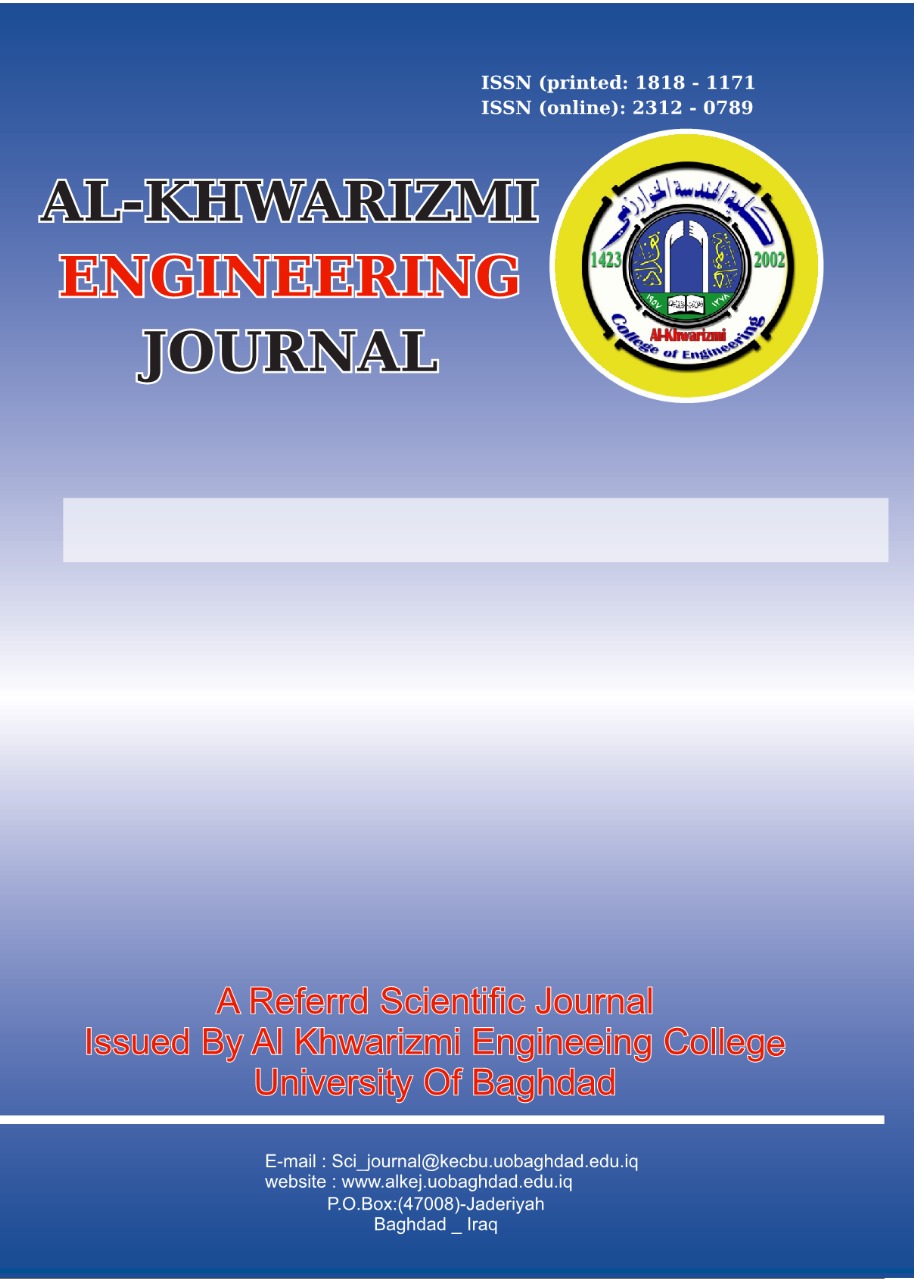تحسين الطرف الصناعي لبتر خلال مفصل الكاحل عن طريق تعزيز المفصل بالحركات الجانبية
DOI:
https://doi.org/10.22153/kej.2024.10.006الملخص
يتميز الطرف الاصطناعي بالعديد من الوظائف منها أنه يستبدل الجزء المفقود نتيجة حروب سابقة أو أمراض أو أسباب أخرى أدت إلى بتر الطرف ، لذلك عند استبدال الجزء المبتور يجب أن يوفر الوظيفة التي تم فقدها أيضًا ، حتى يتمكن المبتور من قبول هذا الجزء الغريب الذي يلتصق به كجزء من أجزاء جسمه ، لذلك نسعى لتحسين وتقوية الطرف الاصطناعي إلى مستوى البتر من خلال مفصل الكاحل من خلال تعزيز الحركات التي تساعد في المشي على أرض مستوية أو منحدرة أو على التضاريس ، وأهمها حركات الانقلاب للداخل والخارج ، وقد تم تصميم المفصل باستخدام برنامج SOLIDWORK وتحليله باستخدام برنامج ANSYS وتنفيذه بشكل واقعي عند الاقتناع. مريض مبتور
التنزيلات
المراجع
Mohsin J. Jweeg and Jana S. Jaffar, “Vibration Analysis of Prosthesis for the through knee Amputation”, Al-Nahrain University, College of Engineering Journal (NUCEJ) Vol.91 No.1, 2016.
Stefano Alleva, Michele Gabrio Antonelli, Pierluigi Beomonte Zobel and Francesco Durante, “Biomechanical Design and Prototyping of a Powered Ankle-Foot Prosthesis”, Materials Journal, Vol.13, 5806 ,doi:10.3390/ma13245806 , 2020.
Anila Viran, Carol Ewashen, Jane Werunga and Teri Green, “Caring for Patients with Limb Amputation”, Nursing Standard, Vol.30, NO.6 ,2015.
Huong Thi Thu Vu , Dianbiao Dong , Hoang-Long Cao, Tom Verstraten , Dirk Lefeber , Bram Vanderborght and Joost Geeroms , “A Review of Gait Phase Detection Algorithms for Lower Limb Prostheses” , Sensors journal, 20, 3972, doi:10.3390/s20143972, 2020.
Joel Zagoya-López, Luis Adrián Zúñiga-Avilés, Adriana H. Vilchis-González and Juan Carlos Ávila-Vilchis, “Review Foot/Ankle Prostheses Design Approach Based on Scientometric and Patentometric Analyses”, Appl. Sci. Journal, Vol.11, 5591, https://doi.org/10.3390/app11125591, 2021.
Claire L. Brockett and Graham J. Chapman, “Biomechanics of the ankle”, National Library Medicine Journal, Vol.30(3):232-238 , 2016.
Ruben C. Martinez, Roberto L. Avitia, Miguel E. Bravo and Marco A. Reyna, “A Low Cost Design of Powered Ankle-Knee Prosthesis for Lower Limb Amputees - Preliminary Results”, International Conference on Biomedical Electronics and Devices, dio:10.5220/0004914402530258, 2014.
Eric Nickel, Jonathon Sensinger and Andrew Hansen, “Passive prosthetic ankle-foot mechanism for automatic adaptation to sloped surface”, Journal of Rehabilitation & Development, Vol. 51, NO. 5, 2014.
Pierre Cherelle, Victor Grosu, Louis Flynn, Karen Junius, Marta Moltedo, Bram Vanderborght and Dirk Lefeber, “The Ankle Mimicking Prosthetic Foot 3 -Locking Mechanisms, Actuator Design, Control and Experiments with an Amputee”, Journal of Robotics and Autonomous Systems, Vol.91, 2017.
Dianbiao Dong, Wenjie Ge, Shumin Liu, Fan Xia and Yuanxi Sun, “Design and optimization of a powered ankle-foot prosthesis using a geared five-bar spring mechanism”, International Journal of Advanced Robotic Systems, Vol.10, dio: 10.1177/1729881417704545, 2017.
Muslim Muhsin Ali, “Design and Analysis of a Non-Articulated Prosthetic Foot for People of Special Needs”, MSc.Thesis, Nahrain University, 2010.
Carina Price and Christopher Nester, “Foot dimensions and morphology in healthy weight, overweight and obese males Clinical Biomechanics”, Centre for Health Science Research, University of Salford, Salford, England, United Kingdom, 2016.
التنزيلات
منشور
إصدار
القسم
الرخصة
الحقوق الفكرية (c) 2023 مجلة الخوارزمي الهندسية

هذا العمل مرخص بموجب Creative Commons Attribution 4.0 International License.
حقوق الطبع والنشر: يحتفظ مؤلفو الوصول المفتوح بحقوق الطبع والنشر لاعمالهم، ويتم توزيع جميع مقالات الوصول المفتوح بموجب شروط ترخيص Creative Commons Attribution License، والتي تسمح بالاستخدام غير المقيد والتوزيع والاستنساخ في أي وسيط، بشرط ذكر العمل الأصلي بشكل صحيح. إن استخدام الأسماء الوصفیة العامة، والأسماء التجاریة، والعلامات التجاریة، وما إلی ذلك في ھذا المنشور، حتی وإن لم یتم تحدیدھ بشکل محدد، لا یعني أن ھذه الأسماء غیر محمیة بموجب القوانین واللوائح ذات الصلة. في حين يعتقد أن المشورة والمعلومات في هذه المجلة صحيحة ودقيقة في تاريخ صحتها، لا يمكن للمؤلفين والمحررين ولا الناشر قبول أي مسؤولية قانونية عن أي أخطاء أو سهو قد يتم. لا يقدم الناشر أي ضمان، صريح أو ضمني، فيما يتعلق بالمواد الواردة في هذه الوثيقة.















